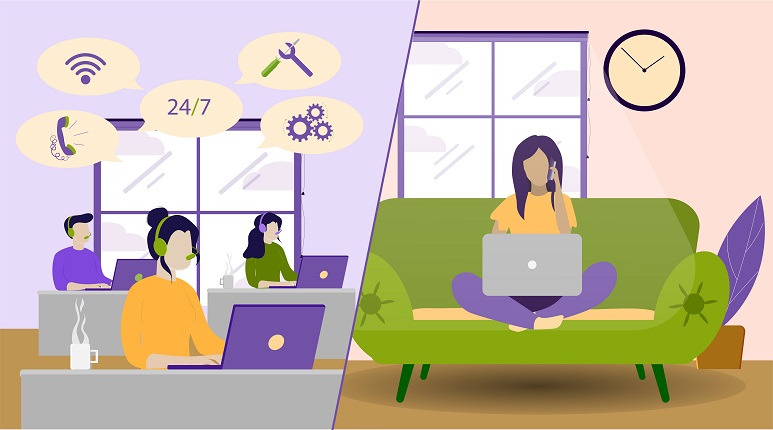The concept of shadow IT is familiar to everyone within enterprise organizations charged with maintaining consistent, compliant, functional technology systems to support the business. But one area where we haven’t tended to hear as much about shadow IT is in the contact center. Contact centers might appear, on the surface, to be the ultimate in standardization: We even picture the physical contact center as a place where row upon row of identical cubicles house agents reading from more or less identical scripts, all of them getting the same kinds of screen pops with the same kinds of information.
And yet, shadow IT may be an issue in your contact center, as consultant Beth English
writes on No Jitter this week. Beth has a great post offering advice on how best to strategize and then roll out transformative technology upgrades in the contact center. She notes that once you start “sleuthing,” as she describes the discovery phase of your transformation project, you may encounter non-approved applications or processes that some groups may have implemented. Then you have to figure out what to do about them.
In her post, Beth describes the often-complex set of tradeoffs involved in contact center transformations in which the enterprise must balance a desire for strategic impact with a need to plan an orderly migration that ensures the promised benefits can actually be realized.
Another recent post, from analyst Sheila McGee-Smith, offers a case study in how such a multi-stage project can succeed. Sheila spoke with Jeff Shah, VP of customer care at The New York Times, who described the Times’s three-phase project to migrate onto the Amazon Connect CCaaS platform, in the process introducing capabilities such as speech-to-text and natural language processing to enhance its understanding of the customer experience.
Finally, my colleague Beth Schultz has a
case study on how Grubhub used Five9’s CCaaS platform to deal with the massive impact that the pandemic brought to the food delivery business. In the article, she describes how Grubhub was able to change many of its business processes essentially on the fly to deal with the huge spikes in traffic it started experiencing once diners switched from eating out to ordering in.
With so much going on in the contact center space right now, it’s not surprising to come across multiple real-world stories that flesh out the trends that industry observers and analysts have been talking about. I’m excited about our Contact Center & Customer Experience track at our fall Enterprise Connect , where we’ll cover the full range of hot topics in this hot industry space. And I’m delighted that Beth English will be leading a session where she’ll share some of the specific experiences and insights she’s gained over the past year-plus as she helped enterprises transform their contact centers to respond to both long-term trends and the short-term crisis created by the pandemic.
Registration is now open for Enterprise Connect, in Orlando, Fla., Sept. 27-29, and we’ll start posting Conference sessions next week. I hope you’ll check out our return to live events, and join us in person if you’re able.









